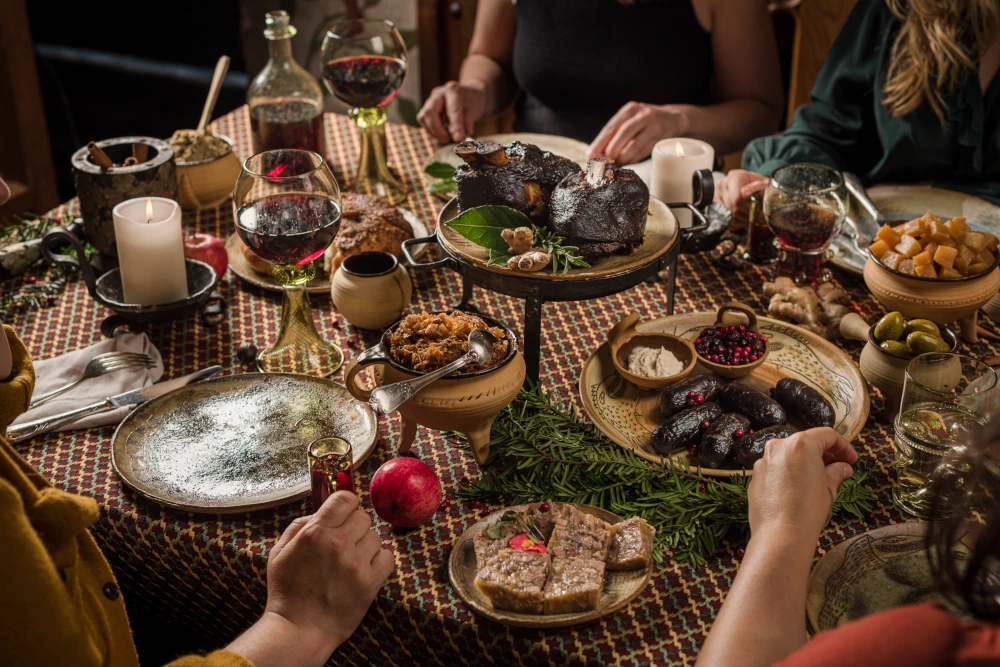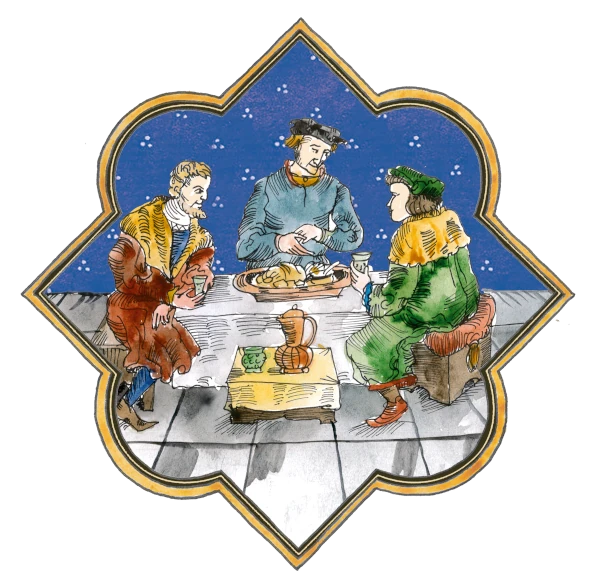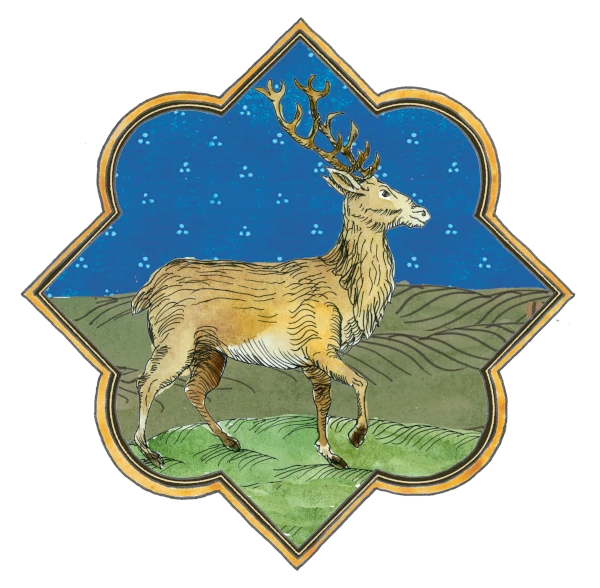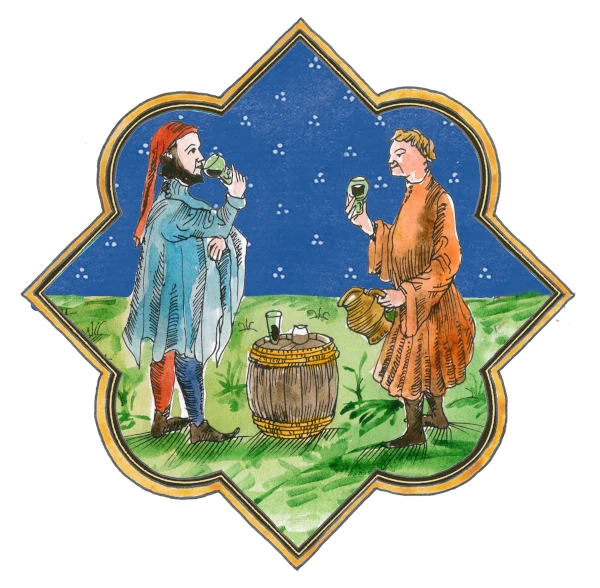Your Medieval culinary journey
is just about to begin
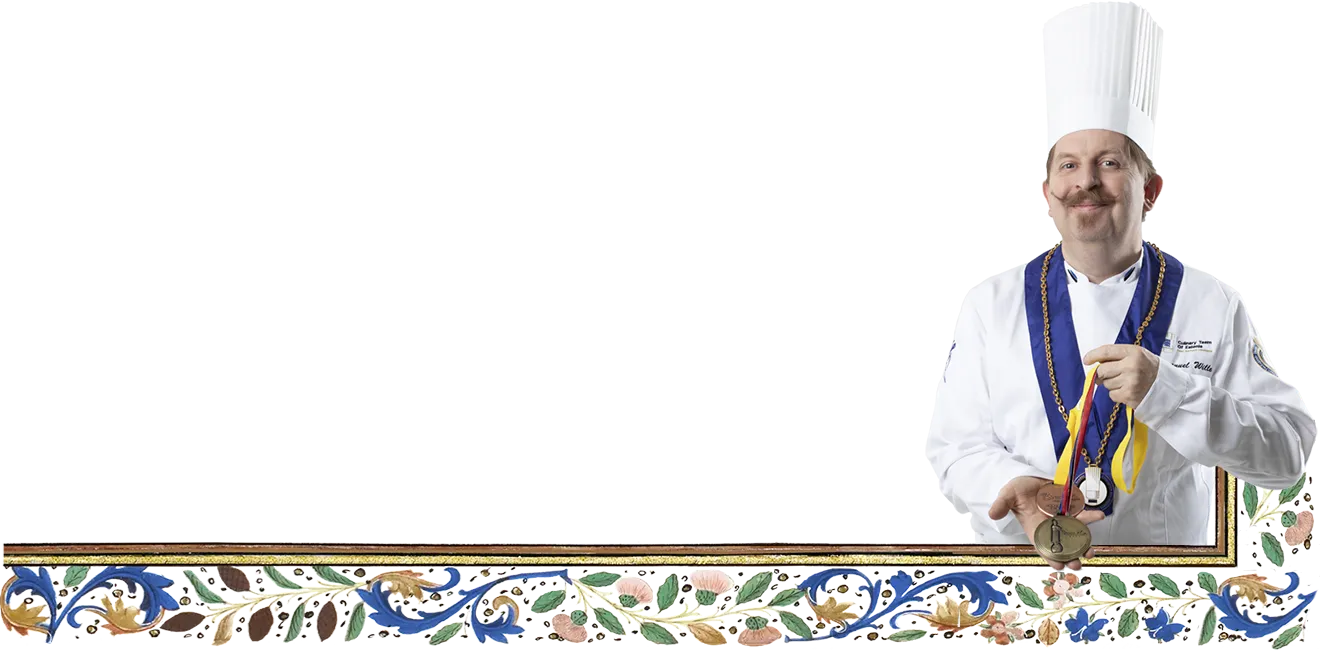
‘My team of Chefs and I carefully research our recipes from documented medieval texts. We then blend all our freshly-sourced produce with indigenous herbs and also spices that would have come to Estonia by way of the Hanseatic League’s trade routes from the Far East.’
Grand Chef – Emmanuel Wille
40 years of Experience including with a Michelin Starred Restaurant and coaching of the Estonian Team at many Bocuse d’Or events
‘My team of Chefs and I carefully research our recipes from documented medieval texts. We then blend all our freshly-sourced produce with indigenous herbs and also spices that would have come to Estonia by way of the Hanseatic League’s trade routes from the Far East.’
Grand Chef – Emmanuel Wille
40 years of Experience including with a Michelin Starred Restaurant and coaching of the Estonian Team at many Bocuse d’Or events

Olde Hansa Cuisine –
well-known in particular for its game meat dishes
There are as many as seven different choices in the menu. Out of those, bear stewed in wild berry sauce, and the elk tenderloin in a truffle sauce can be considered as crown jewels.
Spices
The use of spices is critical in Olde Hansa. Cinnamon, cardamom, ginger, black pepper, saffron, mackerel, and cloves are the heart of the food of Olde Hansa. Aromatic delicacies are made under the watchful eye of Emmanuel Wille, who attaches great importance to the balance of flavors. In each combination of flavors and in each dish, sweet, salty, sour, bitter and so-called umami must be present. This balancing act makes the dishes of Olde Hansa irresistible, and a guest rarely leaves any scraps of food on their plate, even though the portions are quite hearty.
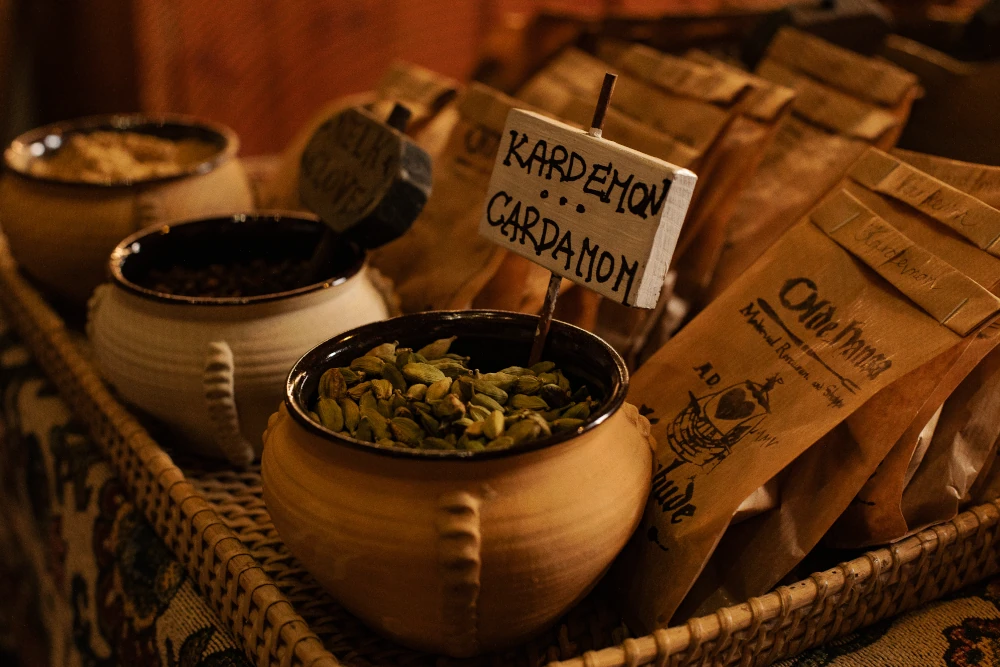
Raw materials
Olde Hansa also uses fresh and country grown ingredients that are obtained directly from local farmers and hunters. It goes without saying that lentils do not grow in Estonia and spices come from the east, in the old days they were brought on ships to the Tallinn harbor, but the vast majority of raw materials are local, wholesome and of very high quality.
Grand Chef – Emmanuel Wille called Manu by his friends
The Chef of Olde Hansa is a Belgian Emmanuel Wille, who has been living in Estonia for over 20 years. His heart is set on creating new medieval tastes. The recipes of that time have been written down in a somewhat inaccurate way – a handful of one ingredient, and a pinch of another exotic spice. One must have enough brains in order to ensure that these recipes help to produce delicious food.
Thanks to Manu and his team, the guest can be entirely sure that the dish ordered is of high-quality, made of the most elegant local raw materials and, of course, incredibly delicious.
In addition to the chef’s office, Manu also promotes Estonian food culture in general. He teaches young aspiring cooks in the Kuressaare Cooking School and has been the coach of the Estonian team at many Bocuse d’Or events, the Olympics for cooks.

Principles of cooking
It is clear that in the 15th century, such fruits of God as potatoes, pumpkin, tomato, cocoa, etc., were not known. But it does not mean that Olde Hansa’s food is not any more inferior because of that. The head chef Emmanuel Wille knows the secrets of making mouthwatering delicacies. This is the so-called slow-food technique. It is long-term and slow cooking on a low-temperature, which preserves the softness, juiciness, color of the meat or vegetables, and also intensifies the flavor.
This is also a very medieval way, because back then, who had the time to spend the precious daylight on cooking? The pot with the best food products was left to simmer on a low heat on the wood stove, and people went to do other chores. When they came back, tasty and nutritious food was awaiting them.
